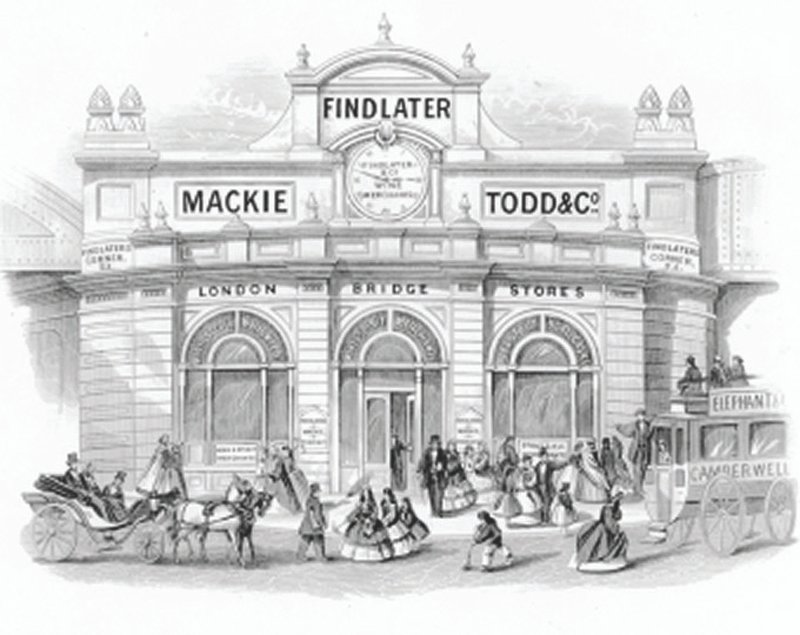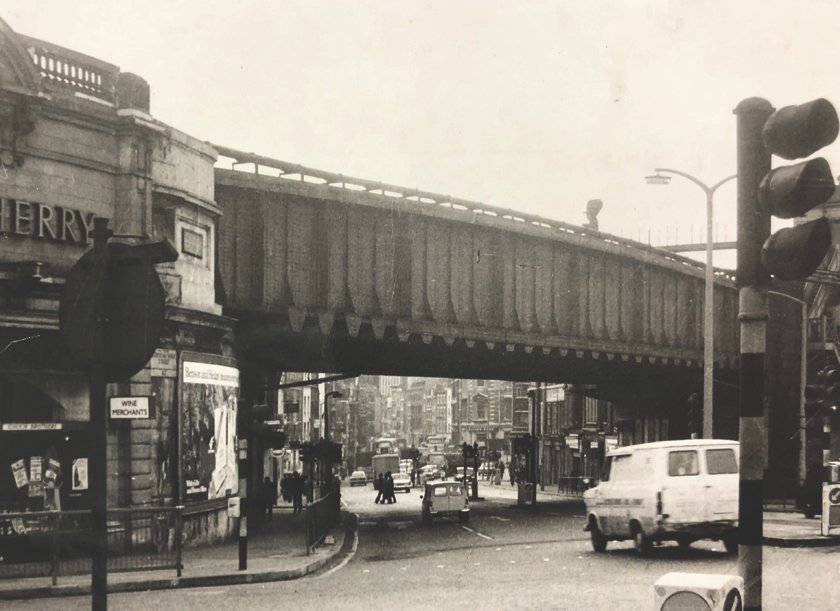A corner that is forever Findlater
The historic former home of Victorian wine merchants Findlater, Mackie and Todd, which has been empty for three years, is set to be restored. TOBY PORTER reveals some of its history and details of the project to revive the area.
A familiar sight to Londoners crossing London Bridge to the south of the river, Findlater’s Corner has been unoccupied since 2018, a few months after the terror attacks so traumatised the area.
The redevelopment, to create four shops or restaurants, will restore the Baroque revival frontage and revamp the interior of the arches over the next year.
Its clock will also come back into use – so you’ll know if you are late for a train.
The units opposite Borough Market are part of a viaduct structure built by South Eastern Railway in 1863-1865 to bring trains from London Bridge into the West End at Charing Cross – the lines also go into the City at Cannon Street.

The island site was the home of wine merchant Findlater Mackie & Todd, who held a Royal Warrant.
Findlater traded from the site for 102 years from 1865-1967. The area was nicknamed Findlater’s Corner by Londoners who passed by the company’s sign.
Passers-by can still spot it on the unloved brickwork.
The striking clock, with its ceramic stag’s head, referring to Findlater’s Scottish roots, is one of the most visible in the city.
In 1897, the original Victorian wine shop architecture was updated and the façade replaced with Beaux Arts style ceramics in a similar material to that used at the Savoy Hotel.
This frontage is still one of the finest examples of a glazed façade in the capital.

That was made just up-river at the Doulton’s factory on the Albert Embankment at Lambeth.
The robust Doulton’s marble-like ceramic frontage was the perfect material for Victorian London’s smoky atmosphere.
It would have been one of the few frontages not tainted by London’s smog, which was only curtailed by Clean Air Act, in 1956, as a direct response to the lethal fog.

The act established smoke-free areas throughout the city and restricted the burning of coal in domestic fires as well as in industrial furnaces.
Managing director of The Arch Company, Adam Dakin, said: “Findlater’s Corner is an iconic part of the fabric of London Bridge and the capital’s history, which is why we’re proud to be restoring it and bringing it back into use.”

Architect Benedict O’Looney said: “This is one of the oldest and most significant historic sites in Southwark, sitting just opposite the southern end of the mediaeval London Bridge and Southwark Cathedral.”
Director of Heritage of London Trust, Nicola Stacey, said: “We are so pleased to be supporting this project and bringing this site back to life.
“Its restoration will bring back an attractive, striking London landmark and grand gateway to London Bridge.”
